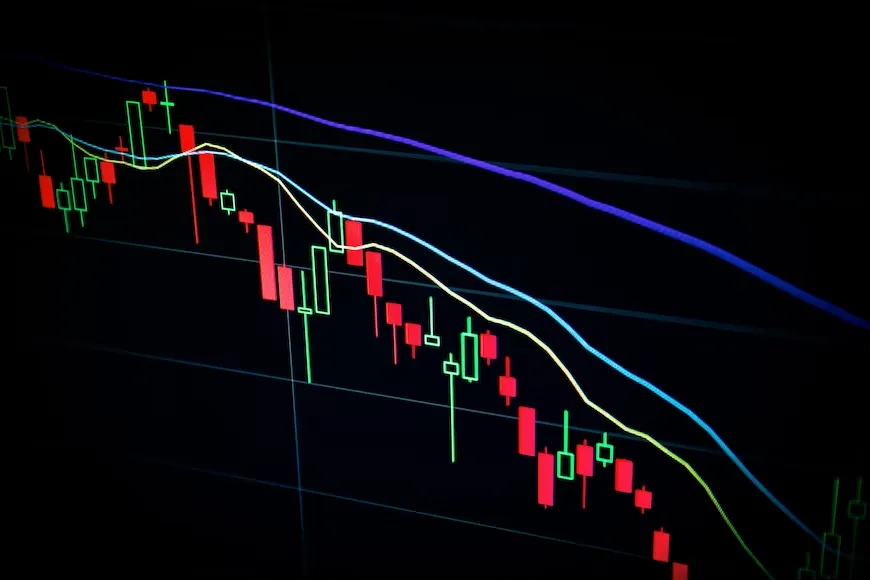To begin, let's clarify that there is no indicator in trading that is absolutely infallible, only indicators that are more or less reliable than others, but frequently, I come across a lot of YouTube videos of cryptocurrency analysts who say that because of the crossing of the moving average of such a period with the moving average of another period, the price will go down or up... And nothing could be further from the truth.

Image Source
Moving averages are just an average
If we analyze what the moving averages are essentially (no matter whether they are simple, exponential or whatever moving averages), we realize that they are just a calibrated average of what has happened to the price of an asset or cryptoactive in a certain time. It is just that, a specific or weighted average of a specific time.
But many traders mistakenly use moving averages as a factor to predict whether the price of this or that asset in the market will go up or down at a given time, and they do so based on previous projections on the charts; where such averages it's see it interacting in one direction or another and the price seems to go up or down depending on them.
But in hindsight it's always an easy thing, I mean, it is always very easy to predict the price of an asset in the past, since we only need to look at the price chart a little further ahead to know where the price went, and the moving averages at the end are automatically arranged to look like they have always predict the price. The problem is that this is not really the case, because the issue is that in trading, the trader really needs to anticipate something that has not yet happened in the market, and as we know, the markets are highly changeable; they are a living organism that feels, lives and acts as such based on supply and demand.
What you have to be very clear about
So what must be very clear when we are traders is that if we take a graph of a cryptoactive (call it Bitcoin, Ethereum, HIVE or any other you want), and we place, for example, an exponential moving average (an EMA) of 15 periods and we put it together with another exponential moving average of more periods (say 50 periods), the crossovers of the averages will always seem to announce something.

Image Source
The rule or concept that many traders use to try to predict the price of an asset in the market basing on moving averages, is that when the average of fewer periods (in the case of the example, that of 15 periods), is above of other one of more periods (in this case, that of 50 periods), then this means that the price of said asset will tend to increase, and when the opposite happens, it will tend to decrease.
The thing is, that's not always exactly the case for at least two important reasons. On the one hand, the average of fewer periods will always be more reactive than the one of fewer periods, because it is an average that is closer to what the price is doing at the current moment and the slow average will always be the least reactive, therefore, we can't fully trust on this projection method for obvious reasons.
On the other hand, the moving averages can indicate a bullish or bearish movement that can be altered suddenly by any change in the market, such as an important fundamental, such as news; or even, by the entry into the market of a trader who makes a large-volume purchase or sale operation.

Image Source
So moving averages are a useless indicator in trading?
No, not at all, of course they are useful in trading, but the analyst or trader must know very well how to use them; understanding the concept of what they are essentially and complementing them with other technical analysis indicators in order to increase the reliability of the price predictions or projections.
Moving averages allow us to see on average what the price has done over time and what it is most likely to do at the present time, but given the changing nature of the markets, the fact that the price projection or movement of the price is probable, does not mean in any case that it is absolutely certain or foolproof.
So, the moving averages are an indicator that you have to know how to use very well so that it can be really useful for the trader when operating in the markets. Generally, we must, as traders, combine it with some technical analysis indicator that tells us about the strength of the movement (such as the ADX) and with another swing indicator (such as the RSI or the Stochastic).
Knowing how to use it, the moving averages will be a good guide to decide what to do in the market. Using it exclusively, or on its own, the moving averages will be the downfall of any trader; because whenever it think the averages are about to cross (or whether have even crossed) in a way that the price of the asset looks like it is going to rise, the trader will enter buying, and immediately the price will turn around and both the price as the moving averages will do something different from what the trader thought that seemed to do... So be very careful with the nonsense of golden crosses and that kind of things. Remember it.
What do you think about the topic discussed? Please comment.

Gif created by @piensocrates